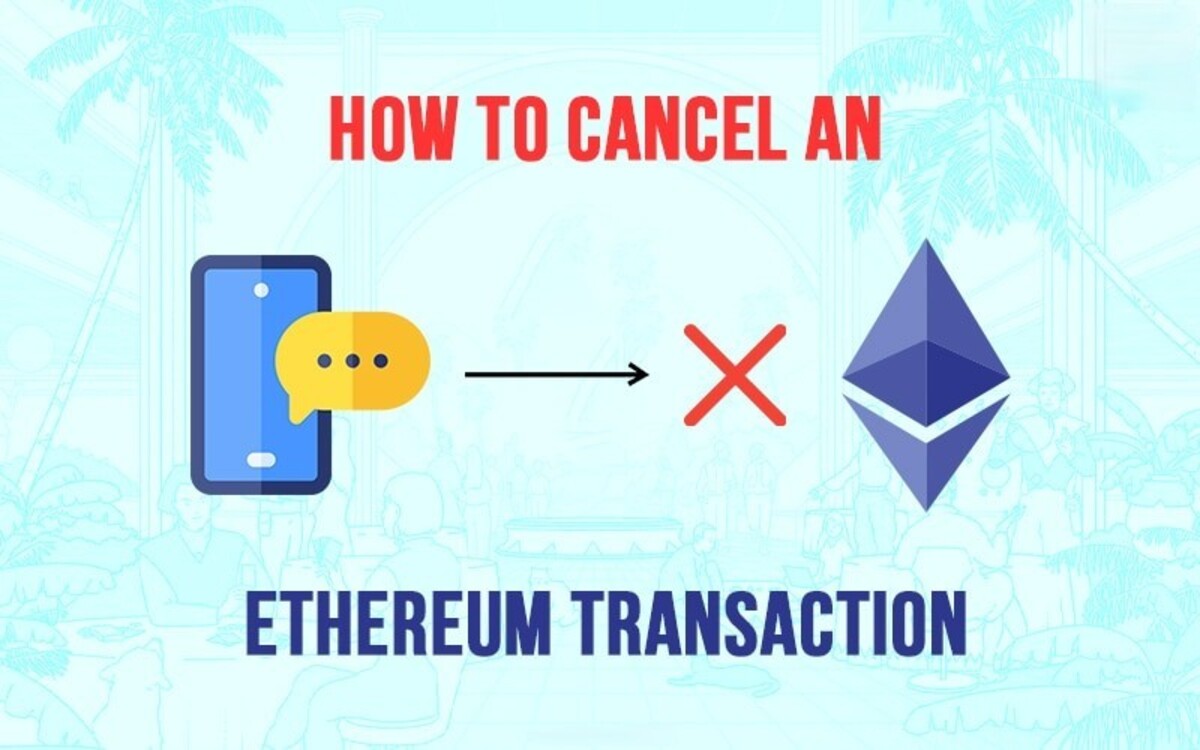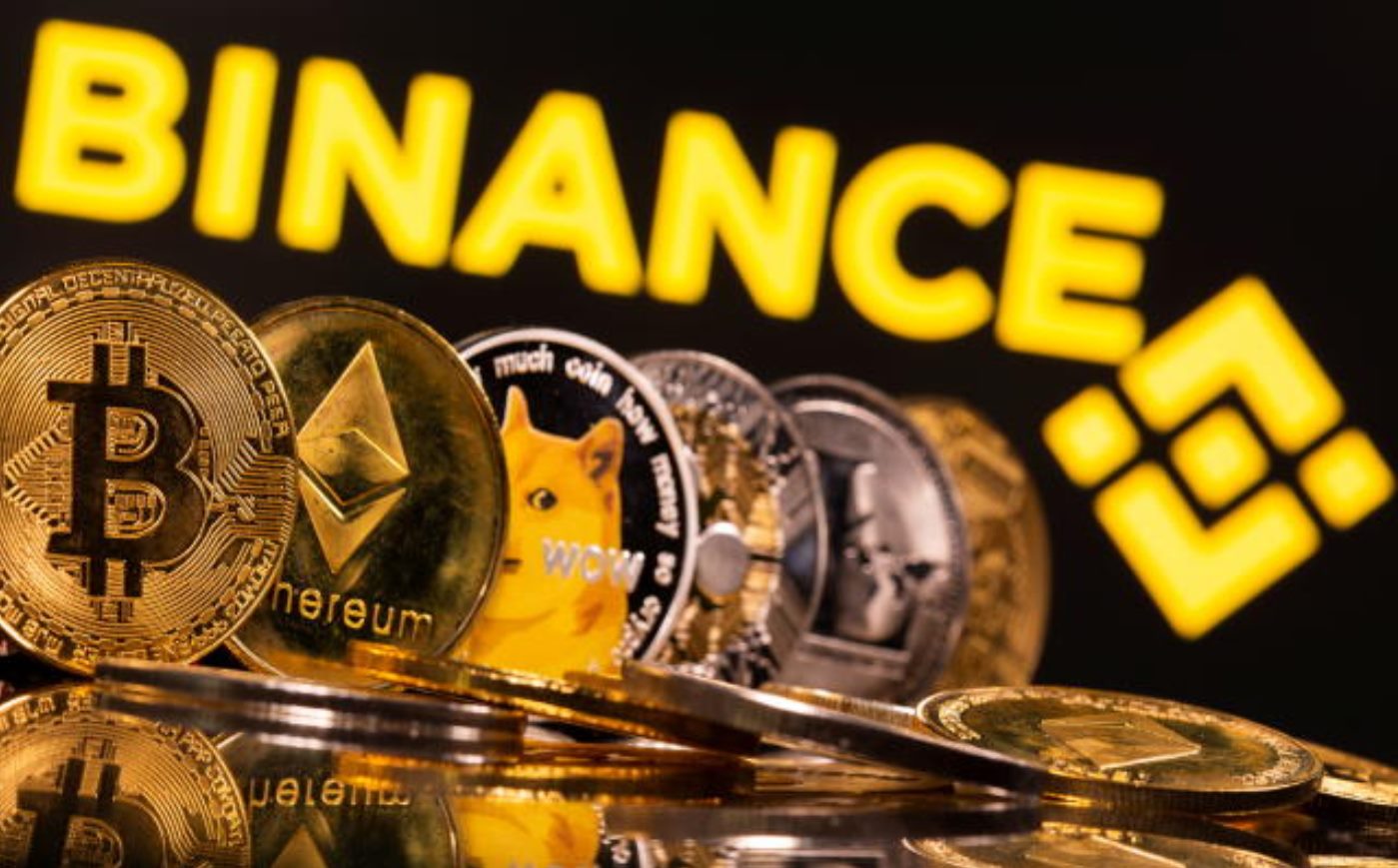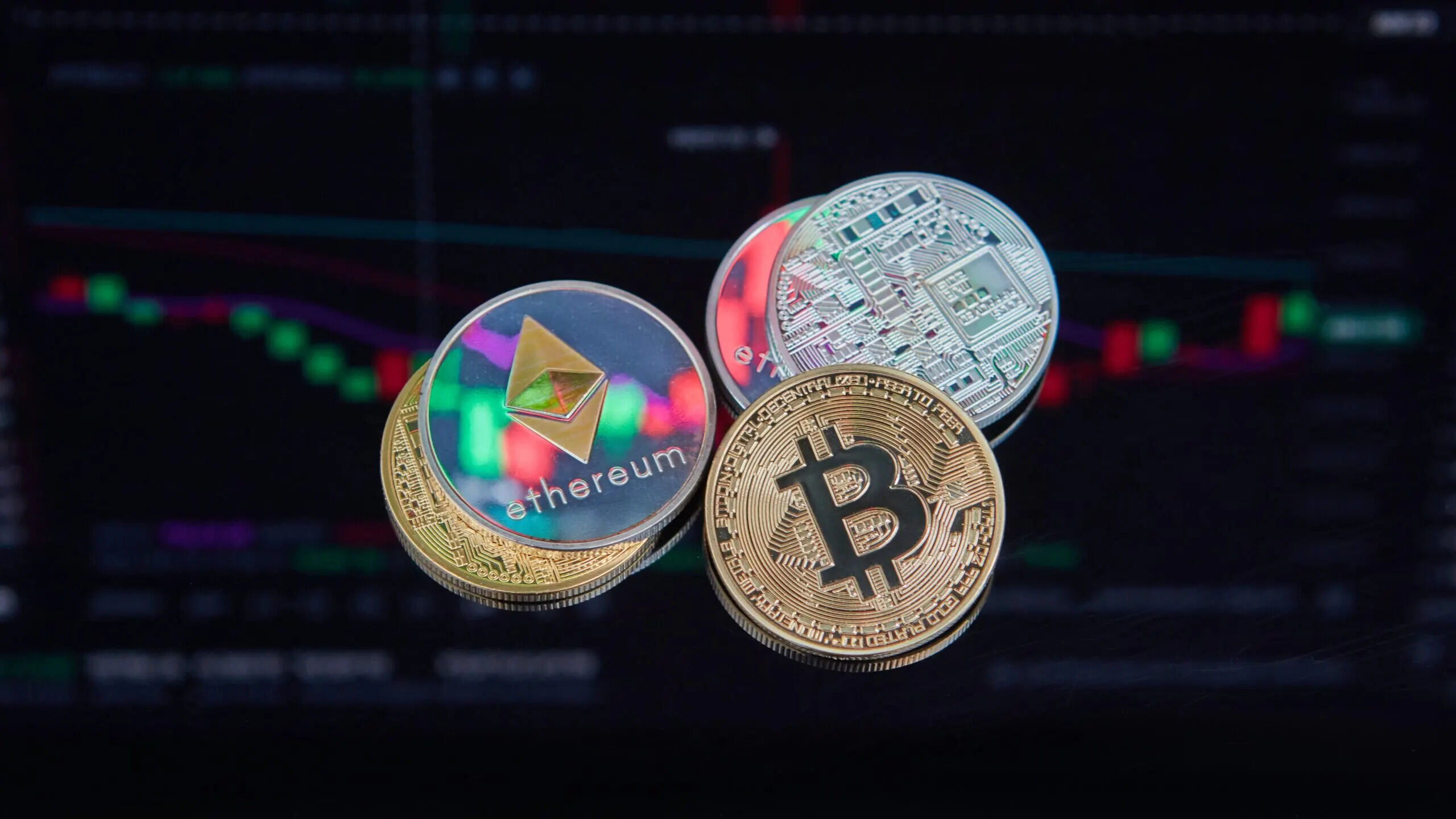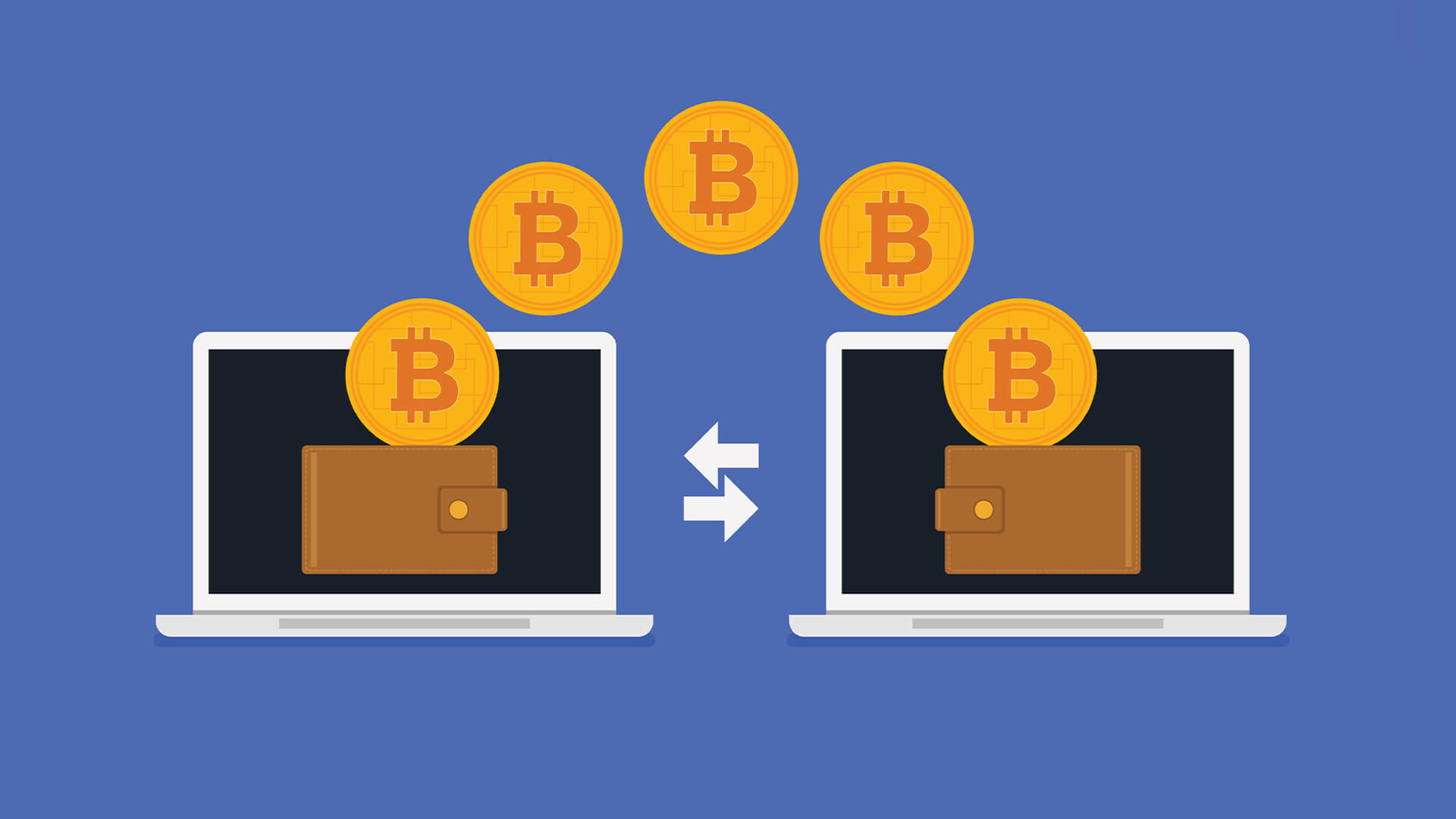Introduction
Welcome to our guide on how to cancel an Ethereum transaction. Ethereum, the world’s second-largest cryptocurrency, operates on a blockchain network that enables users to send and receive digital currency. However, sometimes you may encounter situations where a transaction needs to be canceled due to various reasons.
When you initiate an Ethereum transaction, it is added to a pool of unverified transactions known as the mempool. Miners then include these transactions in a block and validate them. Once a transaction is included in a block and confirmed by the network, it becomes irreversible. However, if a transaction remains unconfirmed for an extended period, or you realize there’s an error in the transaction details, you may want to cancel it.
Canceling an Ethereum transaction is not as straightforward as pressing a button. It requires a strategic approach and an understanding of the different methods available. In this guide, we will explore four possible methods to cancel an Ethereum transaction, ranging from replacing it with a new transaction to contacting the miner or pool operator.
Before we dive into these methods, it’s essential to note that each method has its own set of considerations and limitations. Additionally, canceling a transaction may not always guarantee a successful outcome. Therefore, it is essential to exercise caution when dealing with canceled transactions and familiarize yourself with the potential risks involved.
What is Ethereum Transaction?
An Ethereum transaction refers to the process of sending and receiving digital currency on the Ethereum blockchain network. Ethereum, often considered the second generation of blockchain technology, not only supports the transfer of value through its native currency Ether (ETH) but also provides a platform for developing decentralized applications (dApps).
Each Ethereum transaction consists of several key components, including:
- Sender: The address of the person initiating the transaction, also known as the sender or the originator.
- Receiver: The address of the intended recipient of the transaction.
- Nonce: A unique number associated with each transaction, ensuring its order and preventing duplicate transactions.
- Gas: Gas is the unit used to measure the computational power required to execute a transaction. It helps determine the transaction fee and ensures the network’s stability.
- Data: Optional data attached to the transaction, enabling smart contracts and dApps to perform specific functions.
- Signature: A cryptographic signature generated using the sender’s private key, ensuring the authenticity and integrity of the transaction.
Once a transaction is created, it is broadcasted to the Ethereum network, specifically to nodes known as miners. Miners validate and include these transactions in the next block, which, once added to the blockchain, becomes immutable.
Transactions on the Ethereum network can involve various types of interactions, such as transferring Ether between addresses, interacting with smart contracts, participating in token sales or Initial Coin Offerings (ICOs), and more.
It’s important to note that Ethereum transactions are not instantaneous. They require a certain amount of time to be confirmed by the network and added to the blockchain. The confirmation time varies depending on factors like network congestion, gas price, and the priority set for the transaction.
Now that we have a basic understanding of Ethereum transactions, let’s explore the reasons why you might want to cancel a transaction and the methods you can use to do so.
Why would you want to cancel an Ethereum transaction?
There are several reasons why you might want to cancel an Ethereum transaction. Here are a few common scenarios:
- Error in transaction details: Sometimes, you may make a mistake when entering the recipient’s address, the amount of Ether to send, or other transaction details. Cancelling the transaction allows you to correct these errors before it is confirmed.
- Unconfirmed for an extended period: Ethereum transactions can sometimes get stuck in the mempool for extended periods, especially during periods of high network congestion. If your transaction remains unconfirmed for a long time, cancelling it and resubmitting it with a higher gas fee can help speed up the process.
- Changing gas price: Gas price is a critical factor in determining how quickly a transaction gets confirmed. If you originally set a low gas price and want to accelerate the transaction, cancelling and resubmitting it with a higher gas price can help prioritize its inclusion in the next block.
- Preventing the execution of a smart contract: In Ethereum, you can interact with smart contracts by sending transactions. If you realize that a smart contract will execute in an unintended or unfavorable way, cancelling the transaction can prevent the execution and avoid potential unwanted consequences.
- Security concerns: In some cases, cancelling a transaction may be necessary due to security concerns, such as a potential hack or unauthorized access to your account. By cancelling the transaction, you can mitigate the risk and protect your funds.
It’s important to note that cancelling an Ethereum transaction isn’t always guaranteed, especially if it has already been confirmed and added to the blockchain. However, by understanding the available methods and acting quickly, you can increase the chances of successfully cancelling a transaction or expediting its confirmation.
Now that we have explored the reasons behind canceling an Ethereum transaction, let’s dive into the methods you can use to accomplish this.
Method 1: Replace with a new transaction
One of the primary methods to cancel an Ethereum transaction is to replace it with a new transaction that includes the correct details or higher gas fees. Here’s how you can do it:
- Identify the transaction: First, you need to identify the transaction you want to cancel. You can do this by obtaining the transaction hash or the transaction ID.
- Create a new transaction: Use a wallet or an Ethereum client that supports transaction replacement. Create a new transaction with the corrected details or higher gas fees, ensuring that it has a higher nonce than the canceled transaction.
- Set higher gas fees: To incentivize miners to prioritize the new transaction, set a higher gas price or gas limit. This will increase the chances of the new transaction being included in the next block.
- Submit the new transaction: Broadcast the new transaction to the Ethereum network. Miners will then validate it and include it in a block, effectively replacing the canceled transaction.
It’s important to note that the success of this method depends on several factors, including network congestion, gas price, and miner prioritization. If the replaced transaction includes significantly higher gas fees, miners are more likely to prioritize it, leading to a faster confirmation.
However, there are some limitations to consider. If the original transaction has already been included in a block and confirmed, it cannot be replaced. Additionally, some wallets or clients may not support transaction replacement, so it’s important to ensure that you are using a compatible platform.
Replacing a transaction with a new one is a proactive approach to canceling an Ethereum transaction. However, there are alternative methods you can explore if this method is not suitable for your situation. Let’s move on to the next method: speeding up the transaction.
Method 2: Speed up the transaction
If you want to cancel an Ethereum transaction because it has been unconfirmed for a prolonged period, you can try speeding it up instead. Here’s how:
- Identify the transaction: First, you need to identify the transaction you want to speed up. Obtain the transaction hash or the transaction ID.
- Adjust gas fees: Check the current gas price and compare it to the gas price you initially used for the transaction. If the current gas price is higher, you can speed up your transaction by resubmitting it with a higher gas price.
- Use a transaction acceleration service: There are several transaction acceleration services available that can help speed up your transaction. These services work by including your transaction in a block mined by the service provider, ensuring its swift confirmation.
- Bump up the gas price: Some wallets or clients may offer a “bump” feature that allows you to increase the gas price of a pending transaction. By bumping up the gas price, your transaction becomes more attractive to miners, increasing the likelihood of its inclusion in the next block.
It’s important to note that using this method does not guarantee immediate confirmation. The speed at which your transaction gets confirmed depends on factors like network congestion and the gas price set. However, by adjusting the gas fees and using transaction acceleration services, you significantly improve the chances of expediting the confirmation process.
Before opting to cancel a transaction, consider using this method as a proactive approach to speed up the confirmation process. However, if your transaction cannot be accelerated or you still wish to cancel it for other reasons, let’s explore the next method: using the “Cancel Transaction” feature.
Method 3: Using the “Cancel Transaction” feature
In some cases, Ethereum wallets or clients provide a specific feature known as the “Cancel Transaction” feature. This feature allows you to cancel a pending transaction before it is confirmed on the blockchain. Here’s how you can use it:
- Access your Ethereum wallet or client: Open your Ethereum wallet or client that supports the “Cancel Transaction” feature.
- Locate the pending transaction: Find the pending transaction that you want to cancel. It should be visible in the transaction history or pending transactions section of your wallet.
- Select the “Cancel Transaction” option: If the “Cancel Transaction” feature is available, select it for the pending transaction you wish to cancel.
- Confirm the cancellation: Follow the prompts provided by your wallet or client to confirm the cancellation of the transaction.
It’s important to note that the availability of the “Cancel Transaction” feature varies among different wallets and clients. Additionally, this feature can only be used for pending transactions that have not yet been confirmed on the blockchain.
If the “Cancel Transaction” feature is not available in your wallet or client, or if your transaction has already been confirmed, you will need to explore alternative methods such as replacing the transaction with a new one or contacting the miner or pool operator.
Using the “Cancel Transaction” feature is a convenient way to cancel a pending Ethereum transaction. However, it’s essential to check if your wallet or client supports this feature before relying on it. If this method is not feasible, let’s explore the final method: contacting the miner or pool operator.
Method 4: Contacting the miner or pool operator
If all else fails and you are unable to cancel or speed up your Ethereum transaction through the previous methods, you can consider contacting the miner or pool operator directly. Here’s what you can do:
- Retrieve the transaction details: Gather relevant information about the transaction, such as the transaction hash, sender and receiver addresses, block number, and timestamp. This information will help the miner or pool operator locate and identify your transaction.
- Find the contact information: Research and find the contact information of the miner or pool operator responsible for mining the block that includes your transaction. This information can typically be found on the blockchain explorer or the mining pool’s website.
- Compose a polite request: Write a clear and concise message explaining your situation and politely request their assistance in resolving the issue. Provide the necessary transaction details for reference.
- Submit your request: Send your message to the miner or pool operator using the provided contact information. Ensure that you include your email address or any other contact details for them to respond to your inquiry.
It’s important to note that reaching out to the miner or pool operator does not guarantee that they will be able to cancel or modify your transaction. Their ability to assist you depends on various factors, including their policies and technical capabilities.
Keep in mind that contacting the miner or pool operator should be considered a last resort and may not always yield the desired results. It’s crucial to exercise patience and understand that canceling or modifying a confirmed transaction is challenging and, in some cases, not possible.
If your efforts to cancel the transaction are unsuccessful, it’s important to learn from the experience and exercise caution when initiating future Ethereum transactions. Double-check the transaction details, consider the current gas price and network congestion, and be mindful of the potential risks involved.
With this information, you are now equipped with several methods to cancel an Ethereum transaction. Before proceeding with any method, consider the specific circumstances surrounding your transaction and choose the method that best suits your needs.
Conclusion
Cancelling an Ethereum transaction can be a challenging task, but by understanding the available methods and taking proactive steps, you can increase your chances of success. In this guide, we explored four methods to cancel an Ethereum transaction: replacing it with a new transaction, speeding it up, using the “Cancel Transaction” feature, and contacting the miner or pool operator.
Replacing a transaction with a new one allows you to correct errors or adjust gas fees, but success depends on network conditions and miner prioritization. Speeding up a transaction involves adjusting gas fees and utilizing transaction acceleration services, expediting its confirmation. Utilizing the “Cancel Transaction” feature in wallets or clients allows for the cancellation of pending transactions before confirmation.
If the above methods are not feasible, reaching out to the miner or pool operator directly may be an option. However, this should be considered a last resort, as their ability to assist you varies based on their policies and technical capabilities.
While attempting to cancel an Ethereum transaction, it is important to exercise caution and understand that cancellations are not always guaranteed. It is crucial to double-check transaction details, consider network congestion and gas prices, and be aware of the potential risks involved.
By being proactive and informed, you can navigate the process of canceling an Ethereum transaction effectively. Remember to consider the specific circumstances of your transaction and choose the most appropriate method to achieve your desired outcome.
Now armed with this knowledge, you can confidently navigate Ethereum transactions and deal with any cancellations or modifications that may arise in a more informed and strategic manner.

























